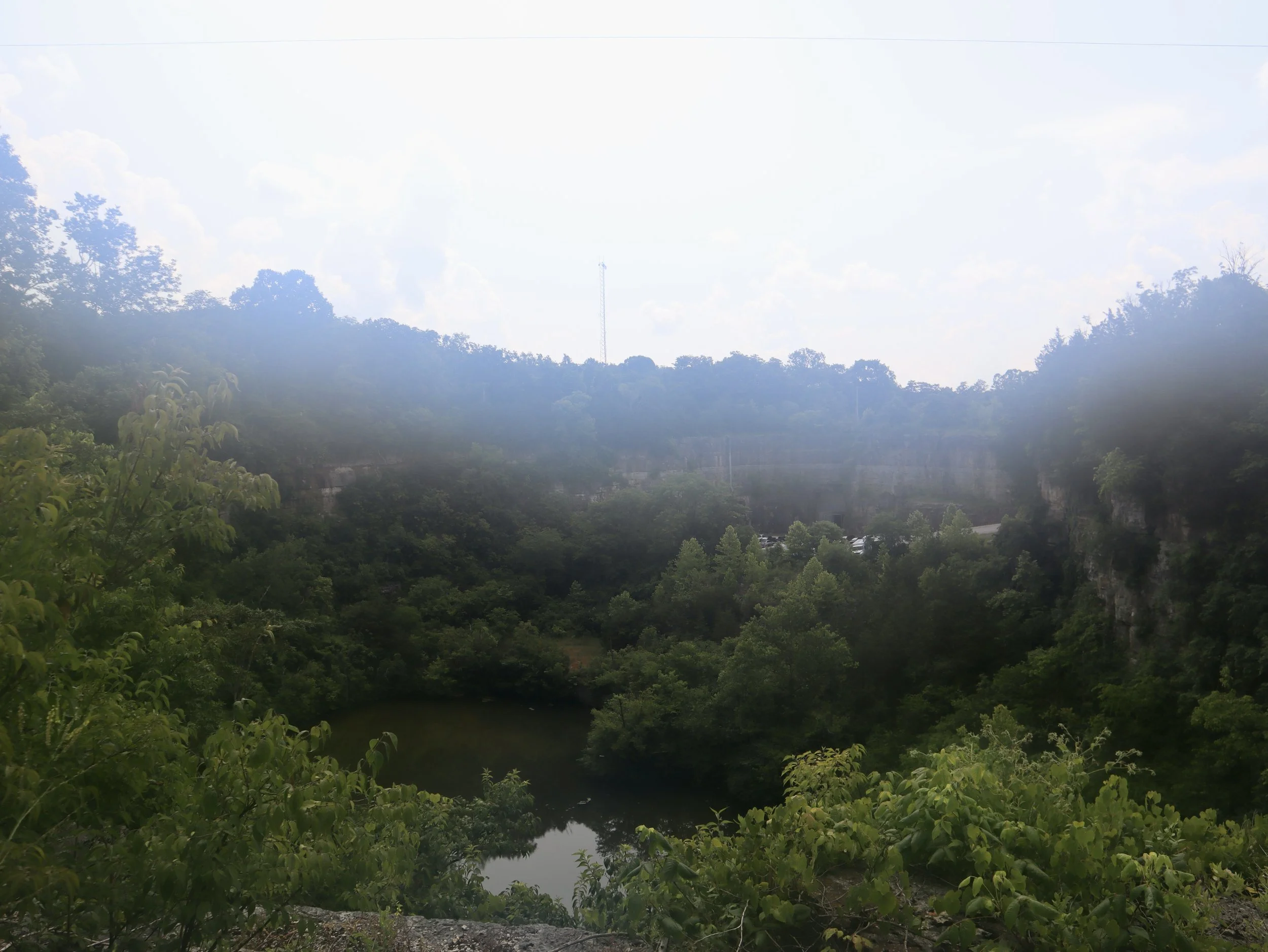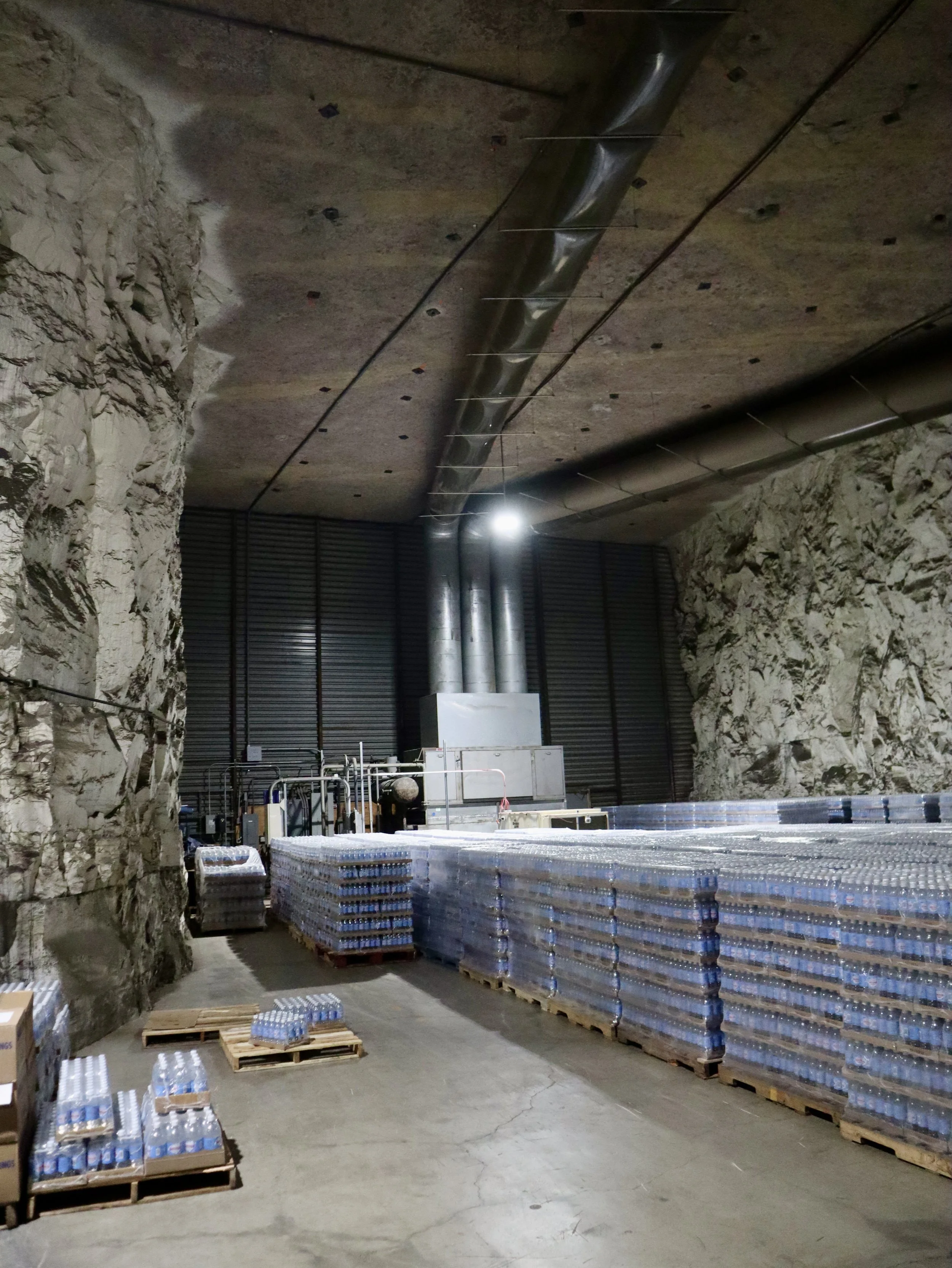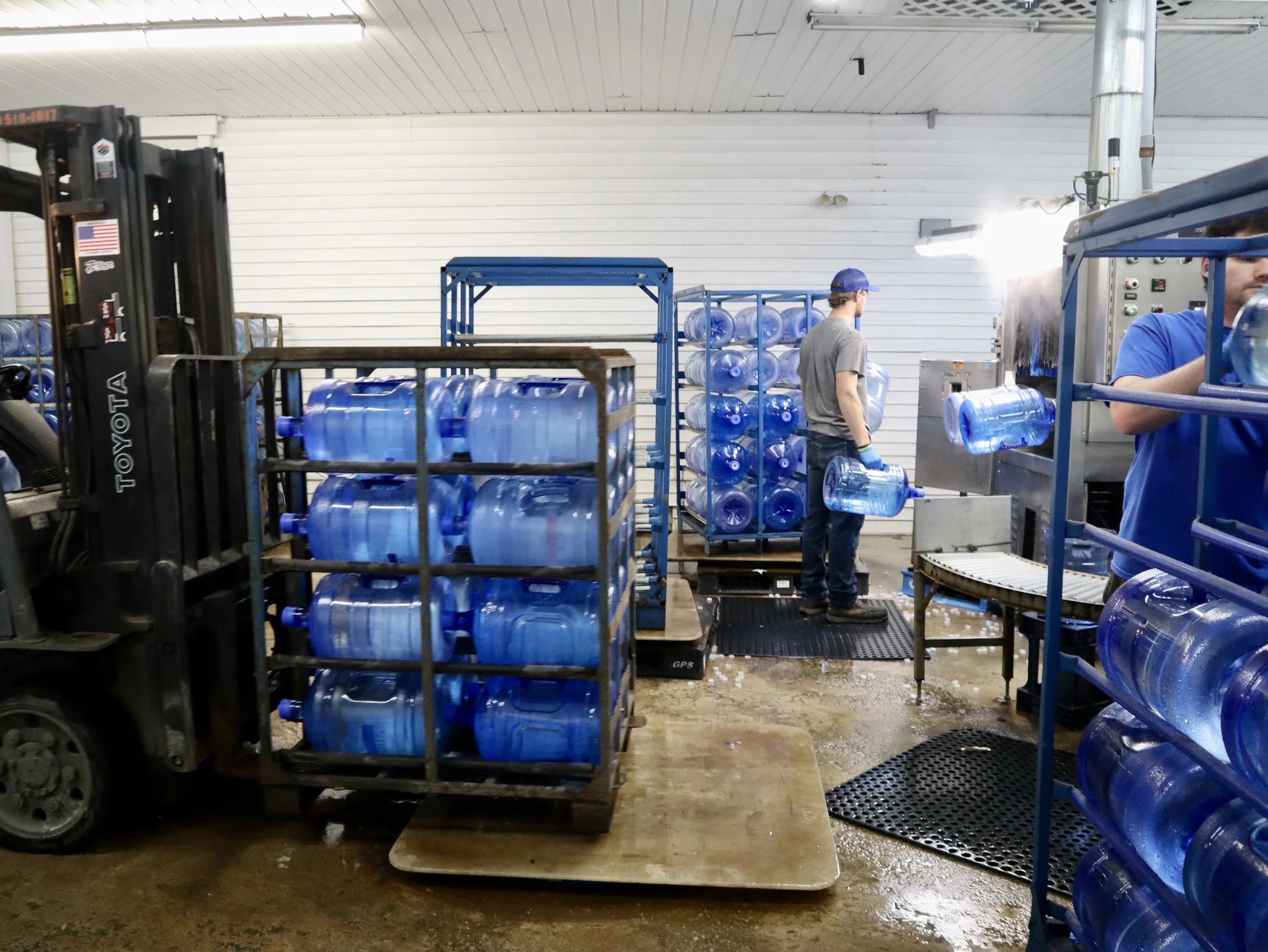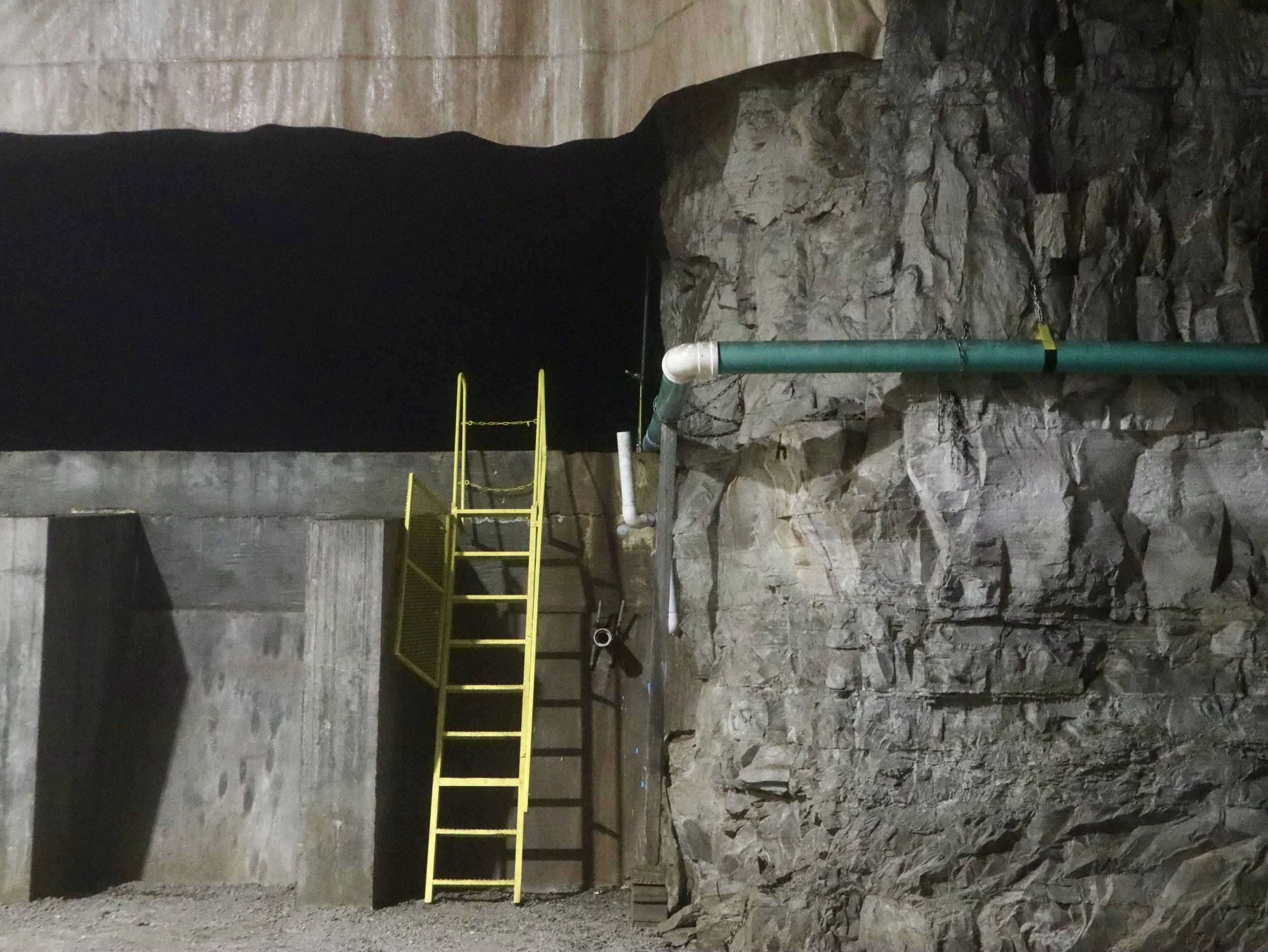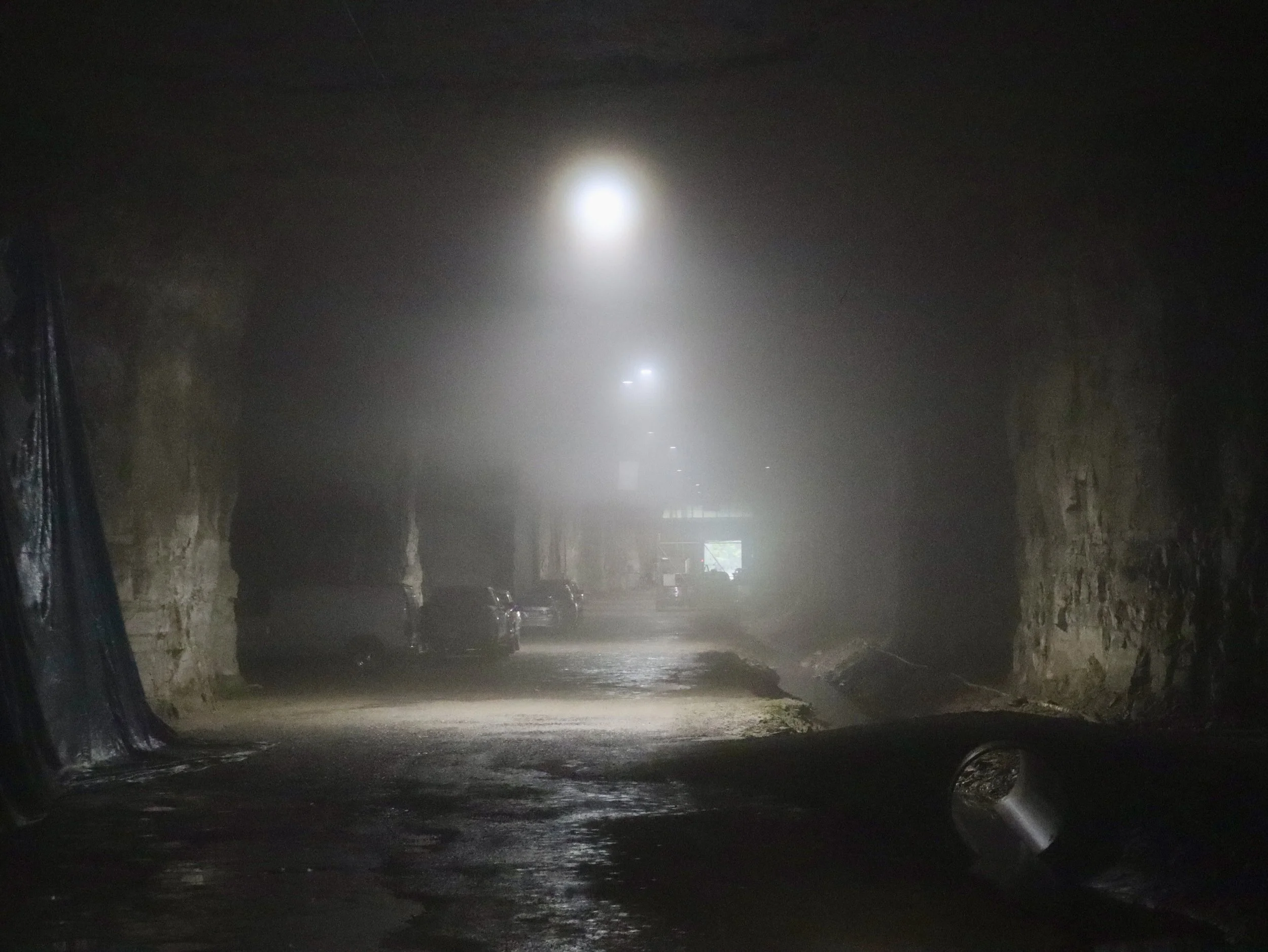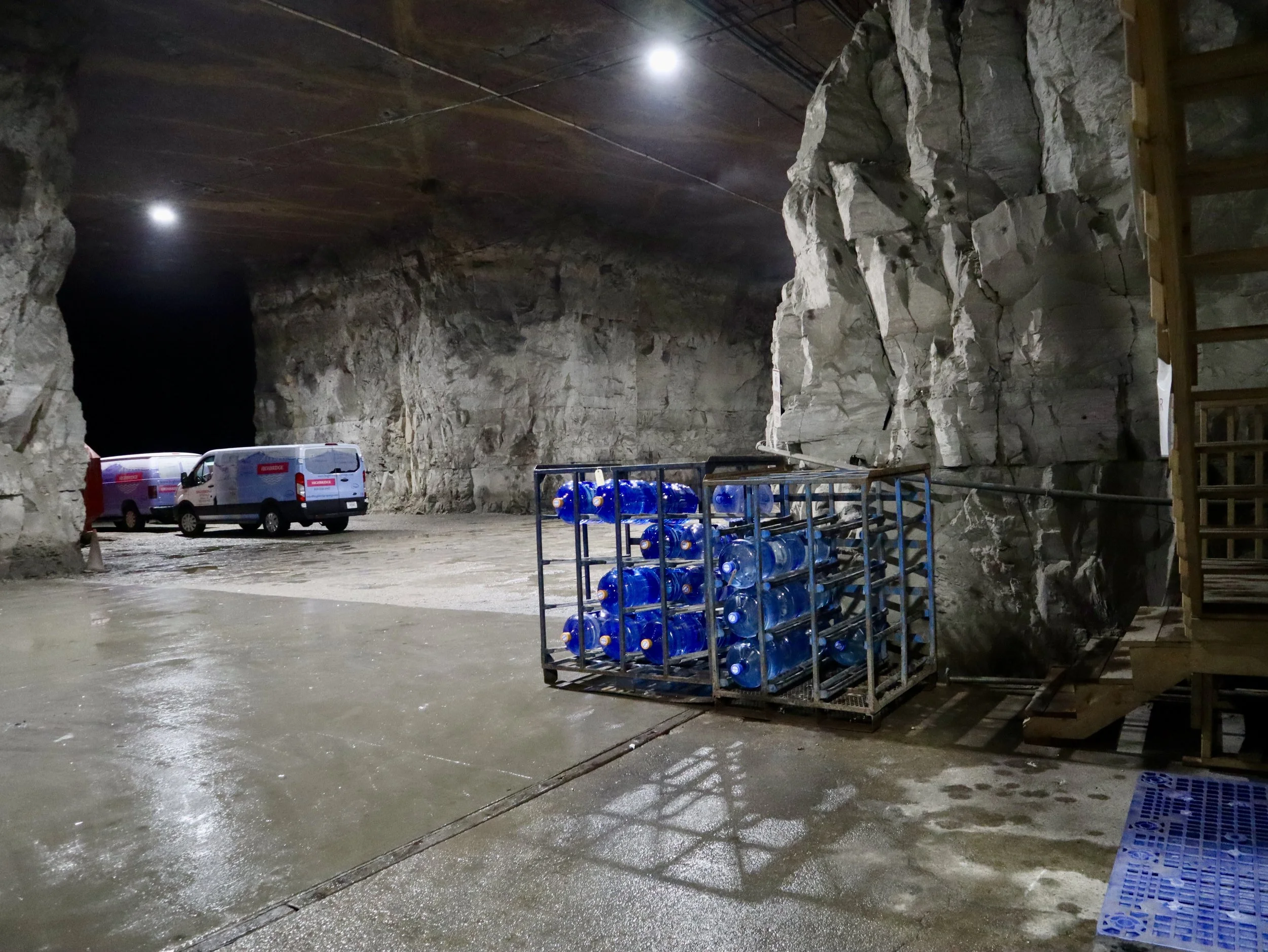A Highbridge Story
story by Donna Hecker & photography by Talitha Schroeder
Driving down a country road, on a day so hot that haze hung heavy in the air, afraid the road itself might deadend as we passed a “no turn around” sign, we finally saw what we were looking for – the entrance to Highbridge Springs. Turning in, we’re further stymied by a semi trying to navigate a tight curve in front of us. He waves us around and then, as we start to descend, we see it – a massive wall of rock with a small gated opening set into its base, the cool air drifting out to greet us.
We were here because not all food comes from farms and what is water if not life-sustaining food? We’d been drinking Highbridge water for a long time but had never really considered its source until a friend told us about driving underground to pick up a donation for FoodChain.
Beyond the gate were all the trappings of a subterranean town – offices, concrete pathways, conveyer belts, water pipes, forklifts and bottling lines – punctuated by hulking rock columns, more than 100 of them, 30’ square and 50’ apart, the original support columns of the old quarry we were in. Linda Griffin kicked off our tour in front of a map of the space; on paper those columns formed a delicate lattice that hardly prepared us for their real-life heft.
Linda is the president of Highbridge Springs; she has wavy auburn hair and eyes that disappear into crinkles every time she smiles – which is often – and a gentle laugh that comes with a light tap on your arm for emphasis.
Her father was W. R. (Bill) Griffin, a grocery wholesaler who dabbled in horses and flights of fancy. He raised five daughters and three of them followed him into business. Or were drafted, depending on who’s telling the story. In Linda’s version, she had met up with her sister Mary one day in their hometown of London, when they got a call from their dad.
“Girls, I want to show you something” he said, back in that summer of 1982. “Something” turned out to be an old quarry that Bill had secretly bought five years earlier, with no real plans except maybe using it for underground storage. He’d called in an engineer from Kansas City to advise him on the high humidity, who told Bill that before he could do anything about the humidity, he needed to deal with the water that poured in through a hole in the roof.
That’s when their dad had the idea to just bottle the water. “We were young and dumb then”, says Linda. “The only bottled water we’d ever seen, other than distilled water that people bought for ironing, were those little bottles of Perrier that rich women drank by the swimming pool.”
But bottle it they did, by hand with a four-head gallon filler, in a small building once used for mushroom cultivation, writing little notes on each case like “take this one to the lake” and so on. Bill sent his girls out on the road each morning with a pickup load of bottled water and strict instructions not to come back until it was empty.
Luckily for them, their dad’s wholesale grocery contacts made the going a little easier and grocers a little more likely to open the back door when they knocked. Especially Leonard Fitch at the Wilmore IGA, who would take whatever was left at the end of the day. Mr. Fitch was one of their first customers, and still is; he just celebrated his 85th birthday.
After a boom in the 1990s, business settled down a bit as the big beverage boys like Coke and Pepsi cornered most of the market. Today, Highbridge water is bottled in 12 oz., 500 ml, 1 liter, 1 gallon, 2.5 gallons, 3 gallons and 5 gallons. The two largest bottles are reusable; all the others can be recycled.
Highbridge Springs water is filtered through reverse osmosis, then further purified through ozonation. Because of this minimal processing, called “polishing” in the water world, FDA regulations mandate that the label specify “drinking water” although it is unmistakably spring water and still retains trace minerals.
The bottles’ distinctive red, white and blue labels feature the company namesake, nearby High Bridge; when the 308’ high railroad bridge opened in the 1870s it was the first cantilevered bridge in America and the tallest over a navigable waterway.
Linda still laughs about that label; on the first print run, High Bridge (two words) was fused into Highbridge (one word) and the family couldn’t afford to have it redone. The name has stuck ever since, but it’s also possible to order water bottled with a custom label – just ask Keeneland Race Track or Toyota Manufacturing.
And although we were there to learn the water business, Linda treated us to a short tour of Kentucky Underground Storage, which her older sister Gale ran for years. It was like something out of an old James Bond movie, a top-secret space deep underground full of items that ranged from the mundane (old medical files and civic club minutes) to the exalted (rare bottles of wine and bourbon, and the personal papers of a legendary Kentucky statesman.)
That’s where Linda told us about the time an insurance agent came out to inspect the facility for a client; after what seemed like forever, he finally had a question for Bill, “At what point would the roof be compromised?” “Well”, her dad answered, stretching the word out like a rubber band before it snapped back into place. “You would be dead.”
On our way back to the office, we stopped by the spring. Sometime during quarrying days, the rock ceiling was punctured, opening up an aquifer above, and the flow hasn’t stopped since, constantly refilling a retention basin that holds three million gallons.
We walked along a misty corridor as Linda pointed out where trucks could pull in to pick up their loads, and talked about the future for Highbridge. It’s a family business, built from the ground (underground, in this case) up, grown one grocery store visit at a time.
Linda shared how much she and her family value their personal relationships with their customers, and the pride that comes from producing a quality life-giving product; and pointed out the rarity of both today.
As we said our goodbyes, we imagined what might have been left unspoken —
It’s been a good life and a good living and I hope it carries on.
Related Content
A Few Cool Cucumbers
When the temperature rises, so does our determination to seek out tasty dishes that don't require turning on the stove or lighting a grill. Cucumbers are coming on strong at the farmers market right now; grab a few and try something new. Because nothing says chill like a cucumber, right?
© 2025, Holly Hill Inn/Ilex Summit, LLC and its affiliates, All Rights Reserved

